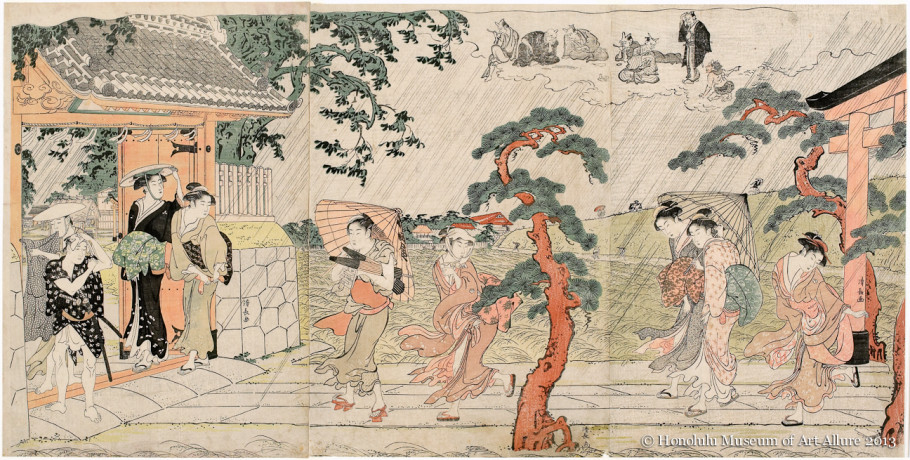Torii Kiyonaga (1752-1815)
A Sudden Squall at Mimeguri Shrine
Japan, Edo period, 1787
Woodblock print triptych; ink and color on paper
Gift of James A. Michener, 1991
Honolulu Museum of Art
(21633a-c)
Mukōjima was a short ferry ride from Asakusa, and a pilgrimage to the Mimeguri Shrine there provided a quick escape from the crowded city. Such pilgrimages also offered a chance to wear one’s finest clothes for a special outing, presenting Kiyonaga with a wealth of textile types and patterns to color his design. Like Street Traffic at Nihonbashi, the artist has flanked either end with a stable, pyramidal grouping of figures, and further experimented with perspective to add novelty to the background scene. Strong horizontal and vertical elements provide contrast for the diagonal lines of rain running across all three sheets.
Drought was a regular feature of Edo life, and prayers for rain the major remedy. Mimeguri Shrine was famous in this context: according to a well-known story, the poet Takarai Kikaku (1661-1707) composed such a prayer in verse and dedicated it to the shrine, an act that miraculously ended the drought.
Here, the subject is given a humorous twist. Elegantly dressed beauties visiting the shrine are caught in the sudden downpour and are hurrying from the torii gate at the right through the wind and rain to reach the shelter of the entrance to the shrine compound on the left. The gods, lounging about in the heavens, casually gaze upon the havoc the fulfillment of the prayer has wrought.
View info on museum database (enabled through support by the Robert F. Lange Foundation)


